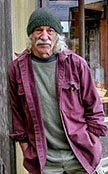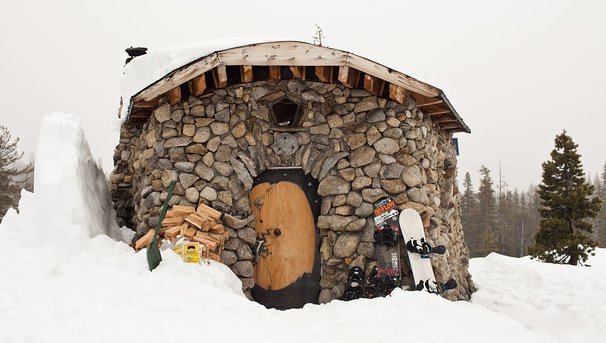 Island Woman did some internet sleuthing, and found out that this is located in Taiwan. (See the 2nd comment, below.)
Island Woman did some internet sleuthing, and found out that this is located in Taiwan. (See the 2nd comment, below.)
Click here.


 Island Woman did some internet sleuthing, and found out that this is located in Taiwan. (See the 2nd comment, below.)
Island Woman did some internet sleuthing, and found out that this is located in Taiwan. (See the 2nd comment, below.)
Click here.
This sent us by Eva. It’s pretty long, and I haven’t watched it all, but I sure would if I lived where there was stone. Looks like a very thorough explanation of the principles of stone walls with and without mortar. A great explanation of why stone wall joints should not be lined up under one another.
I loved this part: “Every stone in the world has an ambition…” — pause, twinkle in his eye –“that ambition is to sink to the center of the earth as soon as possible…”
 By Feldman Architecture, on DesignBoom here.
By Feldman Architecture, on DesignBoom here.
 “Takashi Kobayashi, a self-taught designer, carpenter and architect of 120 amazing tree houses in Japan — some are sleek and modern cubes, some are fairy-tale cottages…”
“Takashi Kobayashi, a self-taught designer, carpenter and architect of 120 amazing tree houses in Japan — some are sleek and modern cubes, some are fairy-tale cottages…”
Click here.
Thanks to “Anonymous”
 Mike Basich was our #1 featured builder in Tiny Homes. Two weeks ago, the Wall Street Journal came out with an article on Mike and his cabin, written by Conor Dougherty, with 15 photos by Jason Henry. Mike’s got an old ski lift that he’s rebuilding so he can ride up and ski down. A remarkable guy. Article here.
Mike Basich was our #1 featured builder in Tiny Homes. Two weeks ago, the Wall Street Journal came out with an article on Mike and his cabin, written by Conor Dougherty, with 15 photos by Jason Henry. Mike’s got an old ski lift that he’s rebuilding so he can ride up and ski down. A remarkable guy. Article here.
Mike is very media-savvy and documented the construction of his cabin in this book called “The Making of a Dream, viewable here.”
Just got this from Germany. I don’t know about fire or vermin hazard, but it looks like it was used extensively at one time.
“An insulating material consisting of dried eelgrass held between layers of cloth or paper; once used as thermal insulation, now little used.
Read more: https://www.answers.com/topic/cabot-s-quilt-1
dear mr. kahn,
we love your books, they are great inspiration for us.
we want to ask you: have you ever experienced insulating houses with eelgrass?
we are great fans of eelgrass, it is possible to collect it from the coasts almost all over the world. in danmark and in some other countries there are roofs thatched with eelgrass/seagrass, they protect the houses for several centuries.
So much material has been coming in to us lately that I’ve lost track of the origins of these 3 photos. Anyone out there send any one of these to us?
 On November 29, I posted a link to a large New York Times article on SunRay Kelley. In retrospect, it’s not really good or fair reportage on SunRay; it doesn’t do him justice. Part of it is East Coast reporter snark about West Coast free-spiritedness. Part of it is that the reporter just didn’t get SunRay— that he’s not only an artist, designer, architect, and inventor, but a master builder. His mortise and tenon joints, even with gnarly lumber, are tight. He’s a carpenter whose buildings soar. There’s a joy and a spirit in both builder and buildings. The NYTimes reporter missed all this and focussed on a bunch of trivialities.
On November 29, I posted a link to a large New York Times article on SunRay Kelley. In retrospect, it’s not really good or fair reportage on SunRay; it doesn’t do him justice. Part of it is East Coast reporter snark about West Coast free-spiritedness. Part of it is that the reporter just didn’t get SunRay— that he’s not only an artist, designer, architect, and inventor, but a master builder. His mortise and tenon joints, even with gnarly lumber, are tight. He’s a carpenter whose buildings soar. There’s a joy and a spirit in both builder and buildings. The NYTimes reporter missed all this and focussed on a bunch of trivialities.
And there was a very weird interview with SunRay’s ex-wife, who came up with some mean-spirited comments. This shouldn’t have been included in the article. Cheap shot, ex-wife-wise and journalistic-wise.
SunRay’s way better than you’d get from this account. In my opinion, there’s no other natural materials builder in the world who’s combined such ecology, design, and craftsmanship in so many buildings on the American landscape.
Just settin it straight…
 For anyone interested in SunRay and his work, we have posted a PDF of the 27 pages we did on him and his work in Builders of the Pacific Coast in 2004. (We do—ahem—a way better job on builders than does the New York Times.)
For anyone interested in SunRay and his work, we have posted a PDF of the 27 pages we did on him and his work in Builders of the Pacific Coast in 2004. (We do—ahem—a way better job on builders than does the New York Times.)
For the real SunRay, click here. (To get this in Acrobat, you may have to right-click and save linked file in downloads folder.)
Bill and Athena Steen are authors of The Strawbale House Book, which became a best seller and started the strawbale building movement in North America. The Steens live at the end of a road in the desert south of Tucson (not far from Patagonia, Arizona), a lovely compound of strawbale and adobe structures built of natural materials. I’ve been down there 3 times and this is the 1st time they’ve visited us in California. See their website here: https://www.caneloproject.com. Their work has been featured prominently in our books Home Work and Tiny Homes.
Bill and I have gone out on a few photo shoots together in Arizona, he with his Nikon, me with my Canon. In recent years Bill has switched to shooting almost everything with his iPhone; he’d told me about it, but this time I got a chance to see it 1st hand. I didn’t even realize that my iPhone had an HDR (high dynamic range) option (if you’re shooting a scene with two sharply different contrasts — like an interior shot of the kitchen, with light streaming in through the windows). HDR takes 2 shots at different exposures and sandwiches them togetherv — right on the iPhone. Voila!
-Photosync to load on to computer
-HDR3 which takes the pic
-Bracket Mode
-True HD
-SnapSeed (which he used to shoot this photo of Lesley and me):